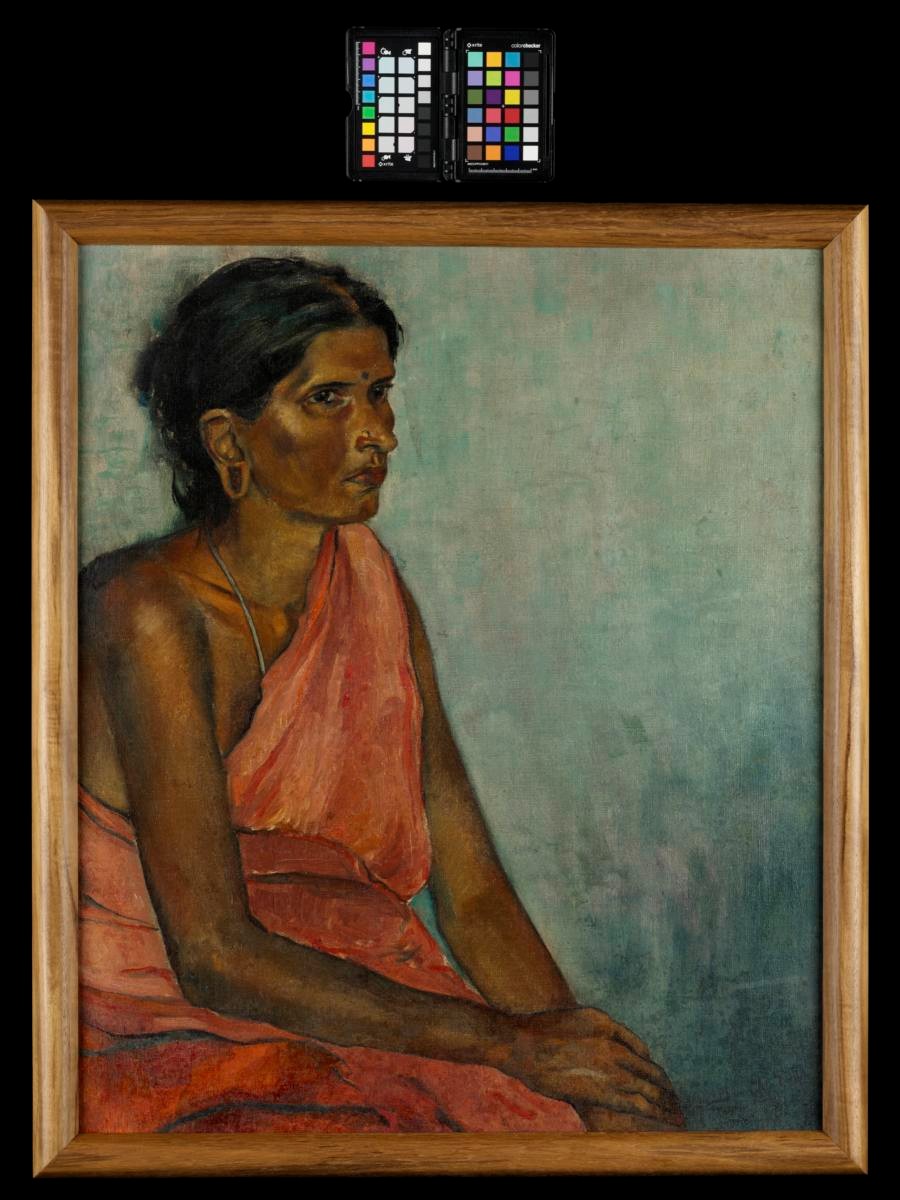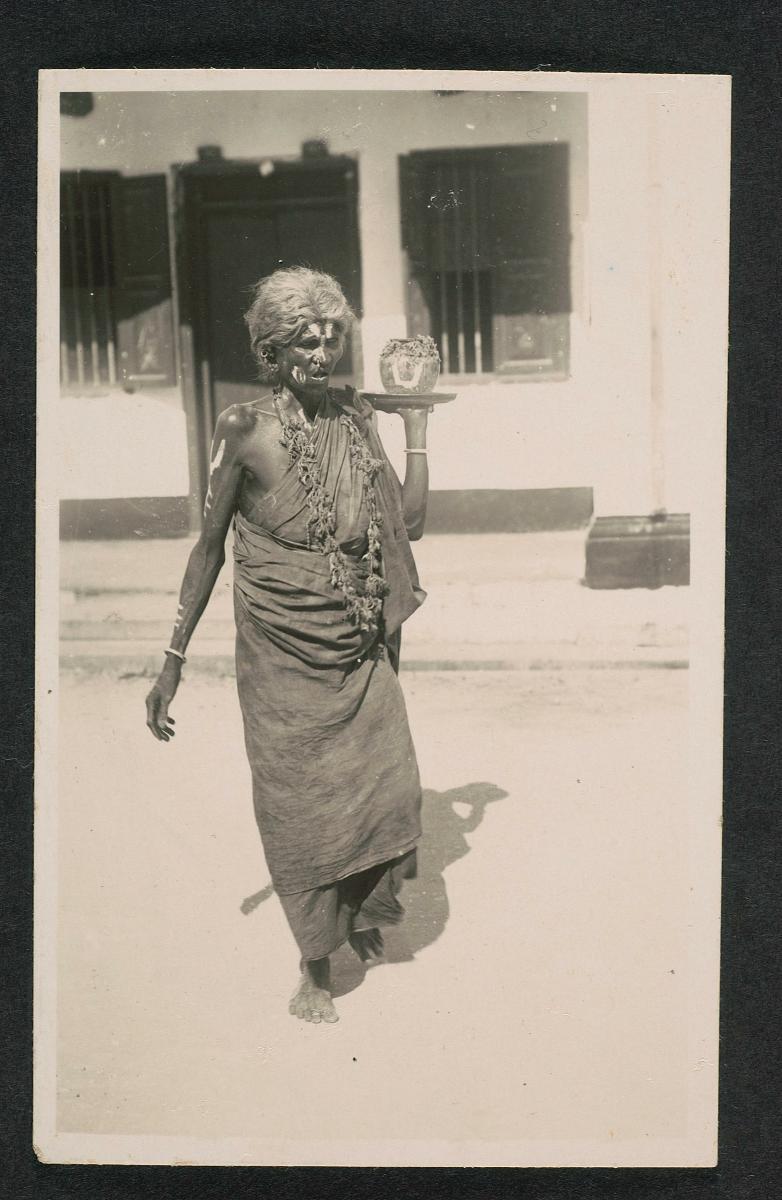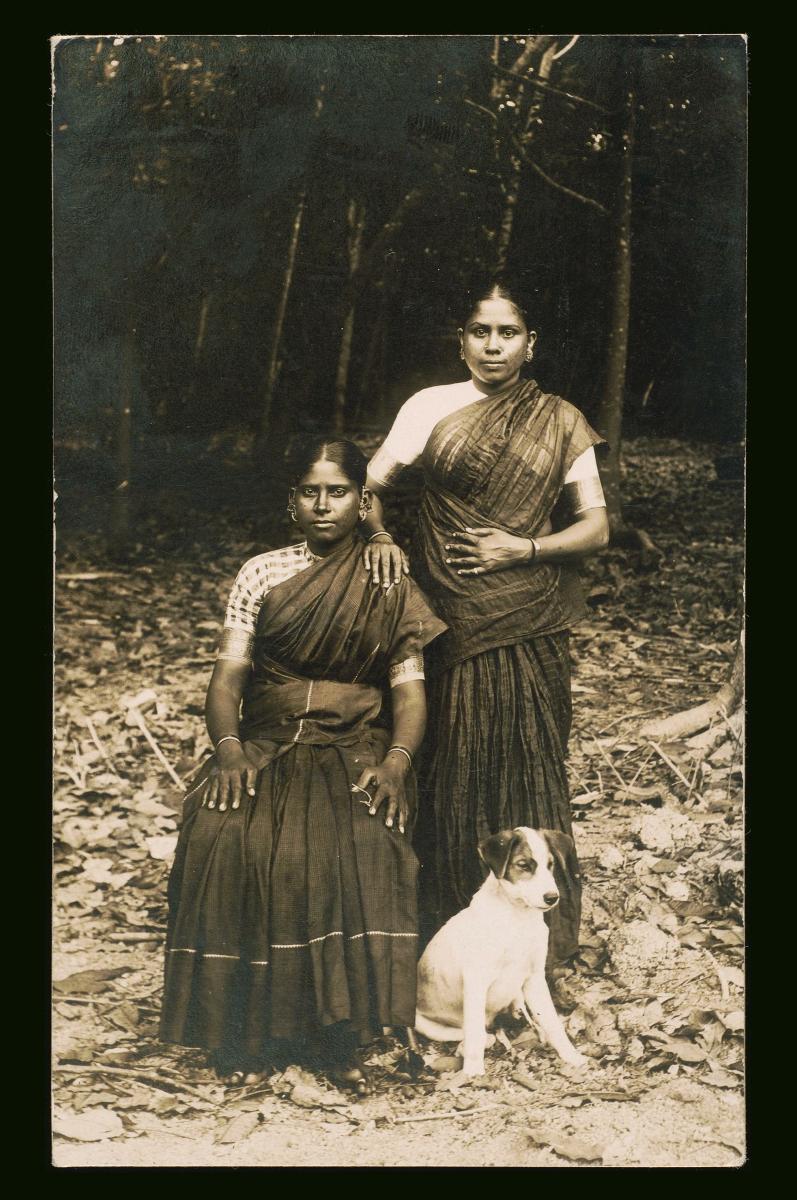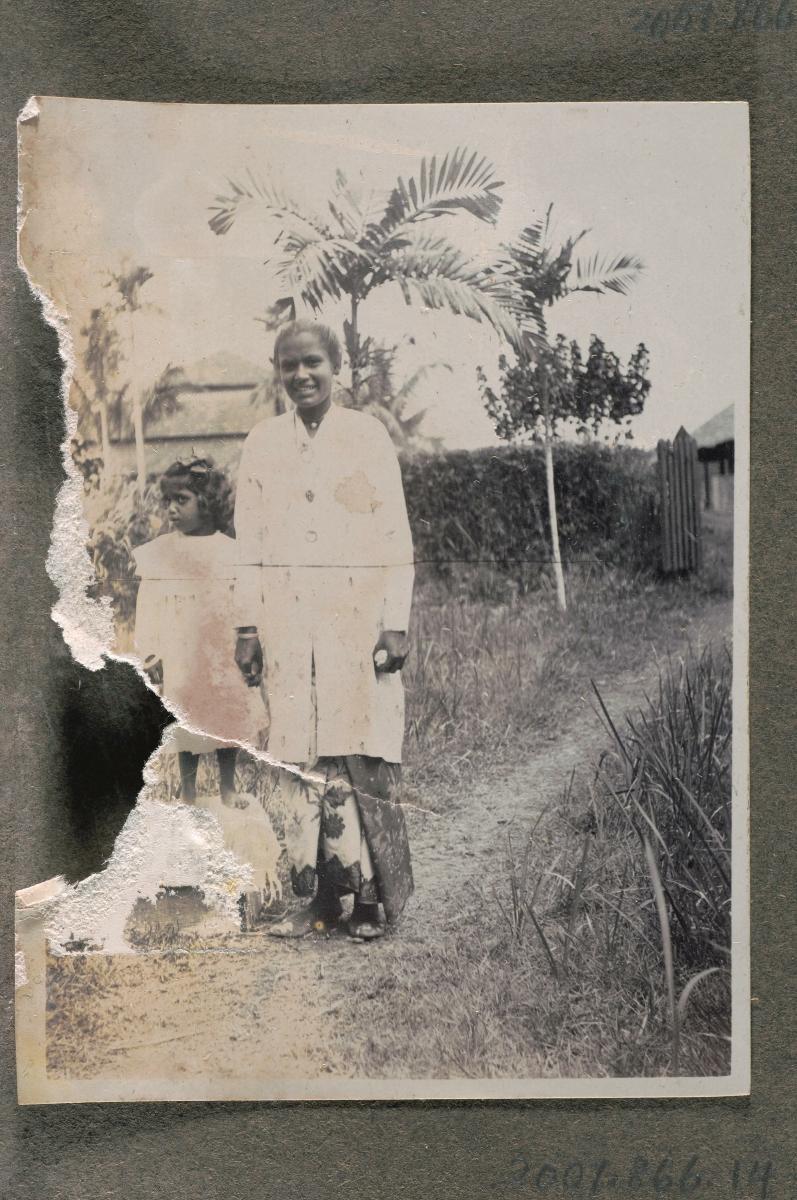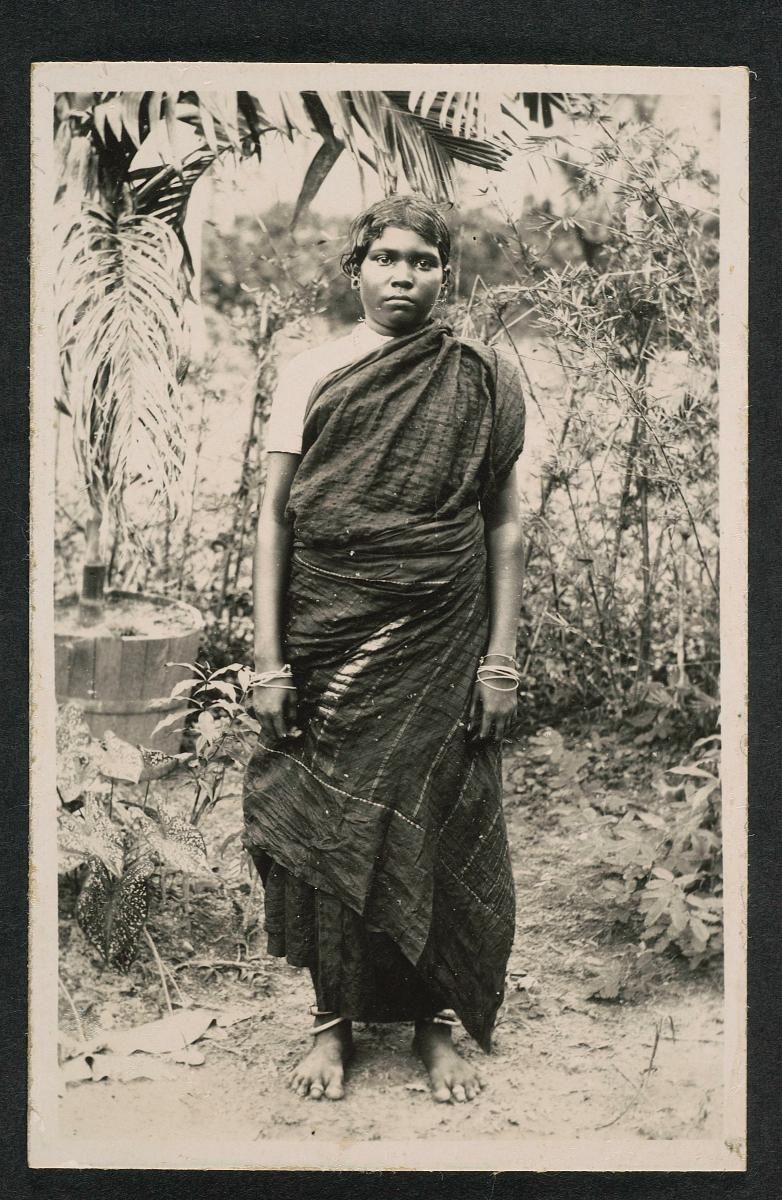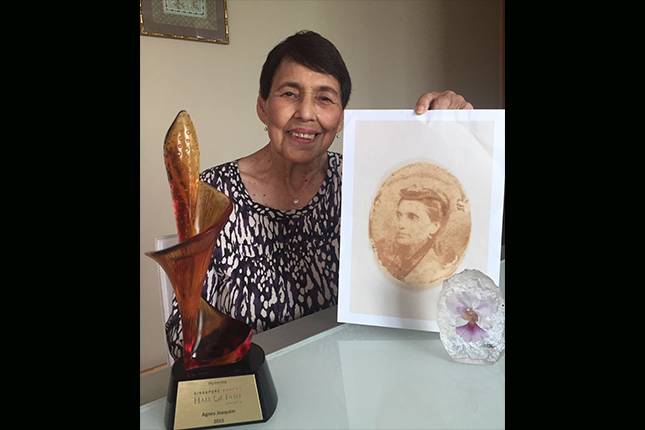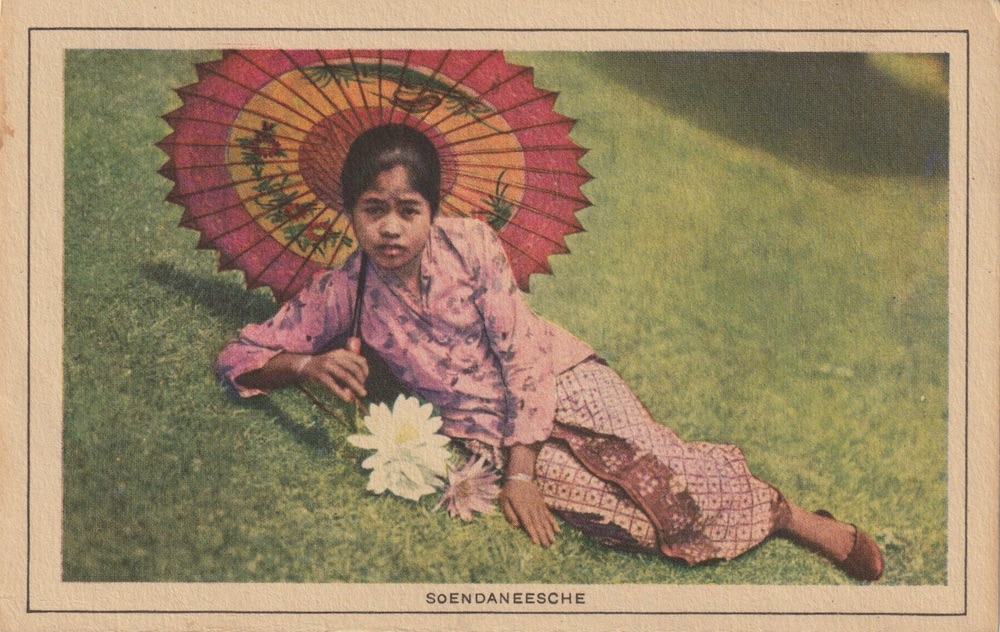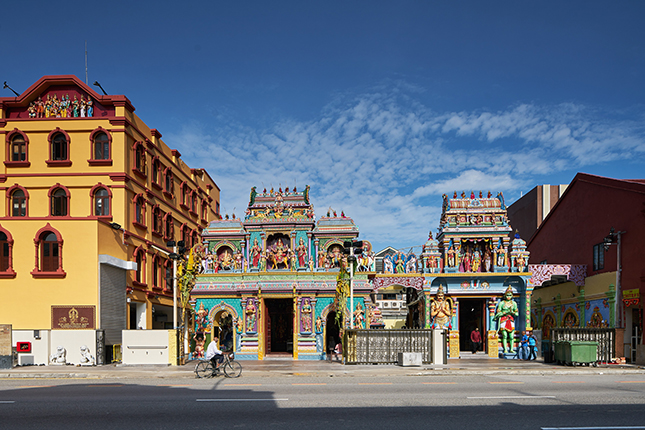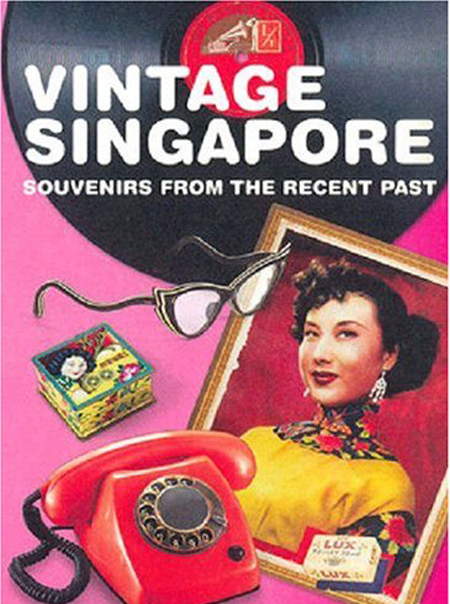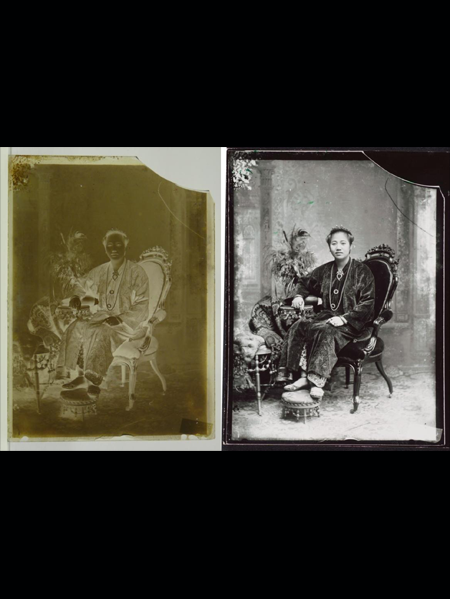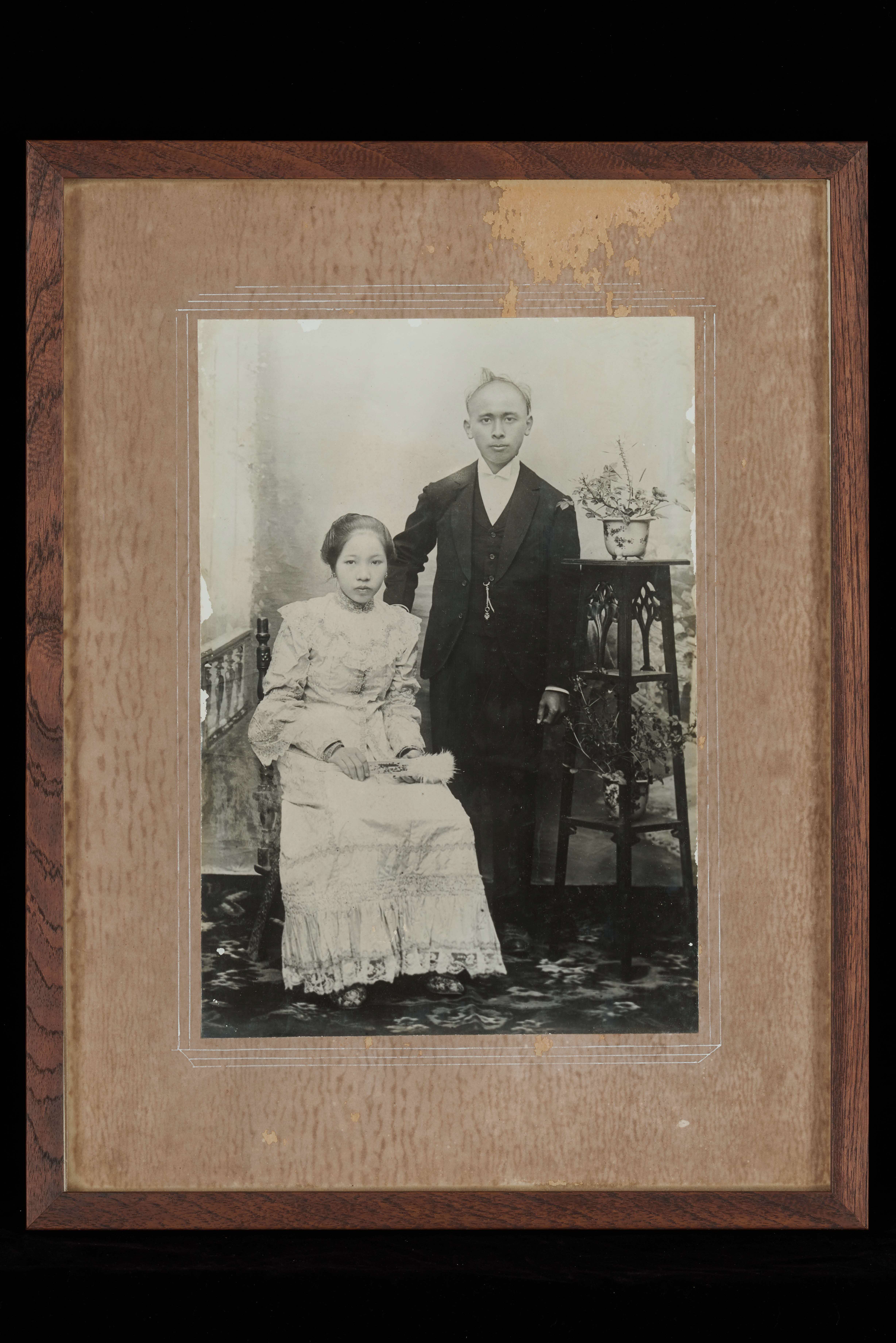The lady here is likely from South India; She is depicted as gaunt (although not weak or fragile) with adornments and markings that suggest the poorer or laboring community. She wears a nose stud and a plug that enlarges her earlobe as well as a tiny dark tilaka (also known as kumkum / bindi/pottu depending on the region in India and contexts) on her forehead. In certain regions, the black tilaka on the forehead would signify the Sudra (sometimes Shudra) or service class - representing services to the other castes – and marking a certain social stratification. In other contexts, a black tilaka would signify being a widow – it is not clear either way from the image alone. In Tchang’s painting, the lady’s saree is a basic drape without the ravike (or choli) [the inner blouse garment] and she wears a simple necklace chain. The attire is consistent with photographs taken of the laboring class of women from Tamil Nadu.Tchang was an intellectual, a critic and editor, an educator as well as a social “leader” and pivotal member of key art agencies and communities such as Society of Chinese Artists. A critic and activist against the Japanese Occupation of China and subsequently Singapore, Tchang was killed in 1942 during the Sook Ching Operation.




